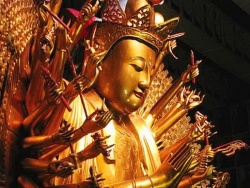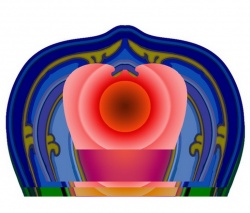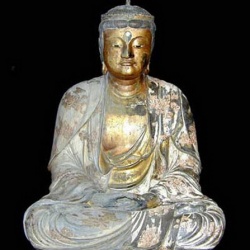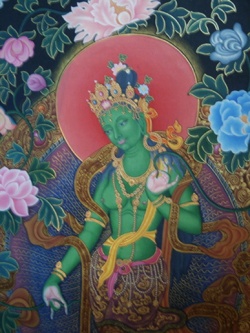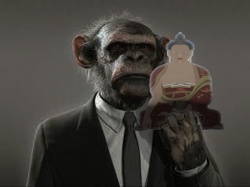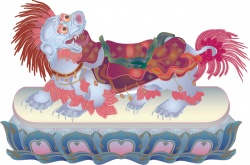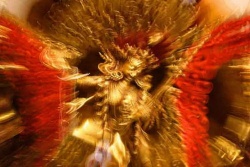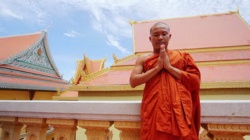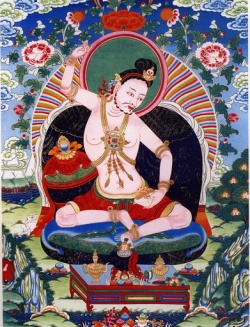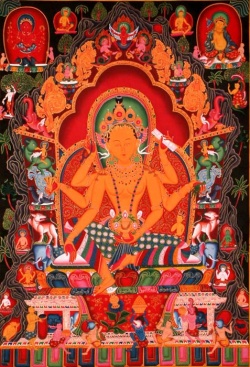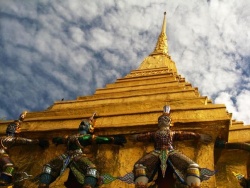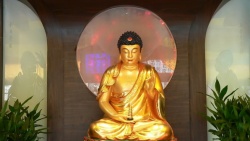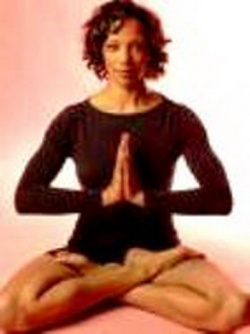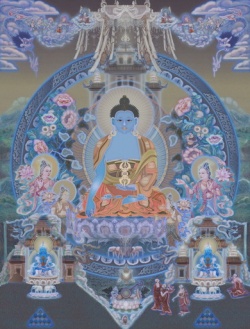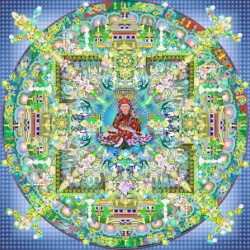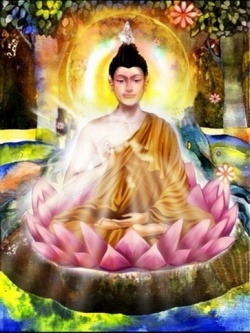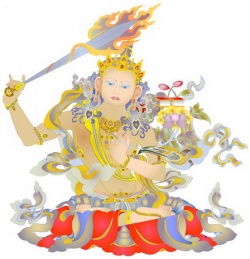Reading the Heart
Translated from the Thai by Ajahn Thanissaro.
The Buddha taught that we are to know with our own hearts and minds. Even though there are many, many words and phrases coined to explain the Dhamma, we need focus only on the things we can know and see, extinguish and let go of, right in each moment of the immediate present - better than taking on a load of other things. Once we can read and comprehend our inner awareness, we'll be struck deep within us that the Buddha awakened to the truth right here in the heart. His truth is truly the language of the heart.
When they translate the Dhamma in all sorts of ways, it becomes something ordinary. But if you keep close and careful watch right at the heart and mind, you'll be able to see clearly, to let go, to put down your burdens. If you don't know right here, your knowledge will send out all sorts of branches, turning into thought-formations with all sorts of meanings in line with conventional labels - and all of them way off the mark.
If you know right at your inner awareness and make it your constant stance, there's nothing at all: no need to take hold of anything, no need to label anything, no need to give anything names. Right where craving arises, right where it disbands: That's where you'll know what nibbana is like... 'Nibbana is simply this disbanding of craving.' That's what the Buddha stressed over and over again.
The mind can be at normalcy, at equilibrium - calm and undisturbed by defilement or the stresses that come from sensory contact.
The mind, if mindfulness and awareness are watching over it, won't meet with any suffering as the result of its actions. If suffering does arise, we'll be immediately aware of it and able to put it out. This is one point of the practice we can work at constantly. And we can test ourselves by seeing how refined and subtle our all-around awareness is inside the mind. Whenever the mind slips away and goes out to receive external sensory contact: Can it maintain its basic stance of mindfulness or internal awareness? The practice we need to work at in our everyday life is to have constant mindfulness, constant all-around present awareness like this. This is something we work at in every posture: sitting, standing, walking, and lying down. Make sure that your mindfulness stays continuous.
Living in this world - the mental and physical phenomena of these five aggregates - gives us plenty to contemplate. We must try to watch them, to contemplate them, so that we can understand them - because the truths we must learn how to read in this body and mind are here to be read with every moment. We don't have to get wrapped up with any other extraneous themes, because all the themes we need are right here in the body and mind. As long as we can keep the mind constantly aware all around, we can contemplate them.
If you contemplate mental and physical events to see how they arise and disband right in the here and now, and don't get involved with external things - like sights making contact with the eyes, or sounds with the ears - then there really aren't a lot of issues. The mind can be at normalcy, at equilibrium - calm and undisturbed by defilement or the stresses that come from sensory contact. It can look after itself and maintain its balance. You'll come to sense that if you're aware right at awareness in and of itself, without going out to get involved in external things like the mental labels and thoughts that will tend to arise, the mind will see their constant arising and disbanding - and won't be embroiled in anything. This way it can be disengaged, empty, and free. But if it goes out to label things as good or evil, as 'me' or 'mine,' or gets attached to anything, it'll become unsettled and disturbed.
You have to know that if the mind can be still, totally and presently aware, and capable of contemplating with every activity, then blatant forms of suffering and stress will dissolve away. Even if they start to form, you can be alert to them and disperse them immediately. Once you see this actually happening - even in only the beginning stages - it can disperse a lot of the confusion and turmoil in your heart. In other words, don't let yourself dwell on the past or latch onto thoughts of the future. As for the events arising and passing away in the present, you have to leave them alone. Whatever your duties, simply do them as you have to - and the mind won't get worked up about anything. It will be able, to at least some extent, to be empty and still.
If you can take your stance at awareness, if you're skilled at looking, the mind can be at peace. You'll know how things arise and disband. First practice keeping awareness right within yourself so that your mindfulness can be firm, without being affected by the objects of sensory contact, so that it won't label things as good or bad, pleasing or displeasing. You have to keep checking to see that when the mind can be at normalcy, centred and neutral as its primary stance, then - whatever it knows or sees - it will be able to contemplate and let go.
The sensations in the mind that we explain at such length are still on the level of labels. Only when there can be awareness right at awareness will you really be able to know that the mind that is aware of awareness in this way doesn't send its knowing outside of this awareness. There are no issues. Nothing can be concocted in the mind when it knows in this way. In other words,
An inward-staying
unentangled knowing,
All outward-going knowing
cast aside.
Edited by An Eternal Now 21 Mar `07, 8:11PM
21 Mar `07, 8:11PM
Cog
(continued)
The only thing you have to work at maintaining is the state of mind at normalcy - knowing, seeing, and still in the present. If you don't maintain it, if you don't keep looking after it, then when sensory contact comes it will have an effect. The mind will go out with labels of good and bad, liking and disliking. So make sure you maintain the basic awareness that's aware right at yourself. And don't let there be any labelling. No matter what sort of sensory contact comes, you have to make sure that this awareness comes first.
If you train yourself correctly in this way, everything will stop. You won't go straying out through your senses of sight, hearing, etc. The mind will stop and look, stop and be aware right at awareness, so as to know the truth that all things arise and disband. There's no real truth to anything. Only our stupidity is what latches onto things, giving them meanings and then suffering for it - suffering because of its ignorance, suffering because of its unacquaintance with the five aggregates - form, feelings, perceptions, thought-formations, and consciousness - all of which are inconstant, stressful, and not-self.
Aware Right at Awareness
Use mindfulness to gather your awareness together, and the mind will stop getting unsettled, stop running after things. It will be able to stop and be still. Then make it know in this way, see in this way constantly - at every moment, with every activity. Work at watching and knowing the mind in and of itself: That will be enough to cut away all sorts of issues. You won't have to concern yourself with them.
If the body is in pain, simply keep watch of it. You can simply keep watch of feelings in the body because the mind that's aware of itself in this way can keep watch of anything within or without. Or it can simply be aware of itself to the point where it lets go of things outside, lets go of sensory contact, and keeps constant watch on the mind in and of itself. That's when you'll know that this is what the mind is like when it's at peace: It doesn't give meanings to anything. It's the emptiness of the mind unattached, uninvolved, unconcerned with anything at all.
These words - unattached, uninvolved, and unconcerned - are things you have to consider carefully, because what they refer to is subtle and deep. 'Uninvolved' means uninvolved with sensory contact, undisturbed by the body or feelings. 'Unconcerned' means not worried about past, future, or present. You have to contemplate these things until you know them skillfully. Even though they're subtle, you have to contemplate them until you know them thoroughly. And don't go concerning yourself with external things, because they'll keep you unsettled, keep you running, keep you distracted with labels and thoughts of good and bad and all that sort of thing. You have to put a stop to these things. If you don't, your practice won't accomplish anything, because these things keep playing up to you and deceiving you - i.e., once you see anything, it will fool you into seeing it as right, wrong, good, bad, and so forth.
. o . o . o .
Our major obstacle is this aggregate of perceptions, of labels. If we aren't aware of the arising and disbanding of perceptions, these labels will take hold. Perceptions are the chief instigators that label things within and without, so we have to be aware of their arising and disbanding. Once we're aware in this way, perceptions will no longer function as a cause of suffering. In other words, they won't give rise to any further thought-formations. The mind will be aware in itself and able to extinguish these things in itself.
So we have to stop things at the level of perception. If we don't, thought-formations will fashion things into issues and then cause consciousness to wobble and waver in all sorts of ways. But these are things we can stop and look at, things we can know with every mental moment... If we aren't yet really acquainted with the arising and disbanding in the mind, we won't be able to let go. We can talk about letting go, but we can't do it because we don't yet know. As soon as anything arises we grab hold of it - even when actually it's already disbanded, but since we don't really see, we don't know...
So I ask that you understand this basic principle. Don't go grasping after this thing or that, or else you'll get yourself all unsettled. The basic theme is within: Look on in, keep knowing on in until you penetrate everything. The mind will then be free from turmoil. Empty. Quiet. Aware. So keep continuous watch of the mind in and of itself, and you'll come to the point where you simply run out of things to say. Everything will stop on its own, grow still on its own, because the underlying condition that has stopped and is still is already there, simply that we aren't aware of it yet.
21 Mar `07, 8:47PM
Cog
What a quiet Sunday it is, overflowing with golden light! Taking a walk this morning along the driveway, with teh sound of crunching white snow, evergreen branches shedding sprays of glistening crystal when touched by the breeze, the taste of tiny flakes on lips and cheeks, descending to the freezing creek with its gurgling waters splashing over icy rocks playfully sparkling in the slight of the sun,crows calling loudly to each other throughout the woods - what heart would not be gladdened?
Under a vast blue sky this wondrous presence is here, replacing habitual worrisome thoughts and feelings. They can't survive the deep silence of open being. it is not brought about by anything or anyone - it is here without effort, without time.
In this sunlit hall with green plants cascading down the wall, sitting together, listening, breathing, and wondering in stillness, we are all alone and yet all one. When thoughts about my problems, my fears, my needs and desires abate in silent presence, what could possibly divide us?
If thoughts are whirling about, let them be snowflakes in empty space! The moment of light and warmth and cool air, inhaling and exhaling softly - are we here? This instant of opening eyes and ears widely, beholding the wooden floor, the distant blue hills, and silent people all around, what else is there?
Is the mind thinking about all this, or can it quiet down in simple wondering without knowing?
~ The Wonder of Presence, Toni Packer
This open being is not something to be practiced methodically. Toni points out that it takes no effort to hear the sounds in the room; it's all here. There's no "me" (and no problem) until thought comes in and says: "Am I doing it right? Is this 'awareness?' Am I enlightened?"; Suddenly the spaciousness is gonethe mind is occupied with a story and the emotions it generates.
~ Joan Tollifson
Let thoughts come up, let them reveal themselves for what they are and disappear. It all is the stuff of dreams, traces from the infinite past. Thoughts may trigger fear, but fear too can become transparency. When it arises, here it is. Let it be. Don't call it by name - labels attract memories and reactions from the past. No need to have any feelings about it - they too are empty. Fear is an unavoidable occurrence in our habitual self-centered consciousness. We cannot possibly live the illusion of a separate me without experiencing fears about what may happen to it. But illusions and dreams can also be seen as just dreams and illusions, even though they can arouse tremendous inner turbulence in the form of horror, agony, or pleasure. It is all part and parcel of human consciousness manifesting as separate me and you.
Sitting quietly, watching things come up time and time again, a tape may be playing: "Is that what meditation is all about? I don't want to spend the rest of my meditative life watching endless repetitions of garbage." But the important thing is not what is seen by the quality of the seeing. When a person asks, "Is watching the comings and goings of thoughts and emotions all there is to meditation?" I say that it all depends on the quality of the watching. Is it consumed by judging, by feeling guilty, ashamed, or impatient? As those mental movements occur, see them for what they are and don't be disturbed by them. That is choiceless awareness - no separate watcher occupying center stage. The inner show is simply displaying itself on its own ad needs no particular audience, no applause or rejection. Let it all happen as it is happening in the infinite space of open presence.
Is "choiceless awareness" just another dream a new illusion? Thought can turn anything into a concept by thinking and dreaming about it. See it when it happens and don't be fooled by it. Choiceless awareness is not an illusion. It is here for human beings like you and me. Transparency unfolds on its own, revealing all there is as it is, in utter directness and simplicity, without need for a director.
Actually, awareness is here even during times of darkness. Presence never goes anywhere. This is not a dogmatic statement but a simple fact that each one of us can come upon. See the cloud, the darkness! Hear the wind! Feel the breathing! Smell the flowers! Touch the swaying grasses! Clouds, wind, thoughts, breathing, fragrant flowers, and grasses change all the time, but seeing is here without time. Even though doubts may obscure it, it is here the instant the mind stops and every cell of the body opens up to hear and see and be.
No need to bother one's head about what has been said. Being present is all of oneself, not just the head! We are this entire living creation from moment to moment without a break. Walk innocently through the fields, into the woods, along the ocean beach or in the city streets with the sheer joys of aliveness, its infinite movements and sounds and fragrance - the love of it all without making a thing out of it!
Are we here?
~ The Wonder of Presence, Toni Packer
22 Mar `07, 2:03PM
Cog
I, who live in spontaneous reality
Depend upon the Magnificent Symbol.
I, who exist in things as they are,
Without self, not thinking, not achieving,
Am saved from the pit of nihilism by existential self-awareness,
Am saved from an eternal heaven by absolute detachment.
I live in consummate pure delight and perfect awareness.
~ Virupa, Master of Dakinis
31 Mar `07, 2:48PM
Cog
Consciousness and Awareness
Source: I AM THAT, Sri Nisargadatta Maharaj
Q: Coming back to sleep. Do you dream?
M: Of course.
Q: What are your dreams?
M: Echoes of the waking state.
Q: And your deep sleep?
M: The brain consciousness is suspended.
Q: Are you then unconscious?
M: Unconscious of my surroundings - yes.
Q: Not quite unconscious?
M: I remain aware that I am unconscious.
Q: You use the words 'aware' and 'conscious'. Are they not the same?
M: Awareness is primordial; it is the original state, beginningless, endless, uncaused, unsupported, without parts, without change. Consciousness is on contact, a reflection against a surface, a state of duality. There can be no consciousness without awareness, but there can be awareness without consciousness, as in deep sleep. Awareness is absolute, consciousness is relative to its content; consciousness is always of something. Consciousness is partial and changeful, awareness is total, changeless, calm and silent. And it is the common matrix of every experience.
Q: How does one go beyond consciousness into awareness?
M: Since it is awareness that makes consciousness possible, there is awareness in every state of consciousness. Therefore, the very consciousness of being conscious is already a movement in awareness. Interest in your stream of consciousness takes you to awareness. It is not a new state. It is at once recognized as the original, basic existence, which is life itself, and also love and joy.
Sustaining Present Awareness
Tonight I'd like to talk about how to practice Dzogchen sky-gazing and the essential point of it. I will introduce this by reading to you a poem, a pith-instruction from the first Jamgon Kontrul Rinpoche, who lived 100 years ago. It is called "View and Meditation of the Great Perfection." Jamgon Rinpoche was one of the greatest lamas of the last century, who helped spread the Rimé (nonsectarian practice) renaissance in Eastern Tibet.
There are many techniques to help us ease into Dzogchen practice, this naked awareness practice called cutting through, seeing through, or sky-gazing. Techniques like breathing, opening into the natural awareness, devotional practices, chanting, shouting P'et, and so on. But don't forget-all of these are just like the doorway, the threshold at the door to cross over, to return to the natural state. If and when we are in natural awareness, we don't have to cross over. Then we don't have to turn the mind upon itself with the self-inquiry question: Who or what am I? We don't have to do a devotional practice. We don't have to surprise ourselves with P'et and awaken pure awareness. But when we are slightly distracted it is very helpful to do those practices, which are like introductory practices to help us come home again to the present awareness. But it is the present awareness that is crucial, is primary. That's the main practice. That's the heart of the matter, the heart practice. That's what this poem is about: That present awareness, which is the heart of the practice, and how to maintain it.
View and Meditation of the Great Perfection
Homage to the Guru, the teacher.
The View and Meditation of Dzogchen can be explained in many, many ways, but simply sustaining the essence of present awareness includes them all.
Your mind won't be found elsewhere.
It is the very nature of this moment-to-moment thinking.
Regard nakedly the essence of this thinking and you find present awareness, right where you are.
Why chase after thoughts, which are superficial ripples of present awareness?
Rather look directly into the naked, empty nature of thoughts; then there is no duality, no observer, and nothing observed.
Simply rest in this transparent, nondual present awareness.
Make yourself at home in the natural state of pure presence, just being, not doing anything in particular.
Present awareness is empty, open, and luminous; not a concrete substance, yet not nothing.
Empty, yet it is perfectly cognizant, lucid, aware.
As if magically, not by causing it to be aware, but innately aware, awareness continuously functions.
These two sides of present awareness or Rigpa-its emptiness and its cognizance (lucidity)-are inseparable.
Emptiness and luminosity (knowing) are inseparable.
They are formless, as if nothing whatsoever, ungraspable, unborn, undying; yet spacious, vivid, buoyant.
Nothing whatsoever, yet Emaho!, everything is magically experienced.
Simply recognize this.
Look into the magical mirror of mind and appreciate this infinite magical display.
With constant, vigilant mindfulness, sustain this recognition of empty, open, brilliant awareness.
Cultivate nothing else.
There is nothing else to do, or to undo.
Let it remain naturally.
Don't spoil it by manipulating, by controlling, by tampering with it, and worrying about whether you are right or wrong, or having a good meditation or a bad meditation.
Leave it as it is, and rest your weary heart and mind.
The ultimate luminosity of Dharmakaya, absolute truth, is nothing other than the very nature of this uncontrived, ordinary mind.
Don't look elsewhere for the Buddha.
It is nothing other than the nature of this present awareness.
This is the Buddha within.
There are innumerable Dharma teachings.
There are many antidotes to many different kinds of spiritual diseases.
There are many words in the Mahamudra and Dzogchen nondual teachings.
But the root, the heart of all practices is included here, in simply sustaining the luminous nature of this present awareness.
If you search elsewhere for something better, a Buddha superior to this present awareness, you are deluding yourself.
You are chained, entangled in the barbed wire of hope and fear.
So give it up! Simply sustain present wakefulness, moment after moment.
Devotion, compassion, and perfecting virtue and wisdom are the most important supportive methods for completely fulfilling this naked, nondual teaching about present awareness, the innate Dharmakaya.
So always devote yourself to spiritual practice for the benefit of others and apply yourself in body, speech, and mind to what is wholesome and virtuous.
Sarva mangalam.
May all beings be happy!
This is the heart teaching of Mahamudra, of Dzogchen, of Zen, of all the nondual teachings: Sustaining present awareness. Recognizing the Buddha-nature through the present moment, this very moment of awareness. If it's awareness taking the form of thinking, recognize the present awareness component of the thought. If you are remembering the past, recognize the present awareness component of the memory. You're not in the past. How could you be in the past? It is present awareness remembering. If you feel distracted when remembering, bring the mind back to the present awareness. You don't have to stop remembering. Recognize present awareness, which is remembering. If you are dreaming, fantasizing about the future, about what you are going to do when you leave here, how you are going to tell everybody how wonderful it was and how great Dzogchen view and meditation is, that's fine-recognize present awareness fantasizing, planning, dreaming. Recognize who or what is doing that present awareness. Know the knower; see through the seer; go beyond me and mine, and be free.
Even if you're not in the past or in the future, even if you are just here-very present-watching your breath or sky-gazing; who cares, really, about the breath? Who cares about the sky? That's just a pretext, a form, a method. It's just the means; it's not the end. Who is doing that? Recognize present awareness while sky-gazing. We're not sky worshippers. We are watching the breath, but are we breath worshippers? Or are we, rather, getting to know the heart-mind and how this body and mind work? Notice it is just present awareness that is watching the breath. If you are watching the breath very one-pointedly, that's great, but that's just the means. It's not the end. What if you are watching the breath, and the mind is jumping around like a wild monkey in a tree's branches? Recognize present awareness that is jumping around. It's present awareness. It's no worse than staying in one place. If the monkey is just sitting in the corner of the cell or jumping around all four corners, it's still a monkey. Or for that matter, the Buddha. Monk or monkey. One nature. Like water and ice-the same nature in temporarily different states.
Recognize this innate awareness, this renowned Rigpa, which is always with us no matter how far we may feel from it-this total presence, our primordial being, this untrammeled, never limited freedom-our true nature. And be free. Enjoy it however you like. You can't know it; it is not an object of the mind. It's not a thing. But you can be it, at ease in your own way, in your own life. You have it all; use it however you like. You are free to be as deluded and miserable, or as free and joyous and enlightened as you like. Use it however you like. That's the inherent freedom of being. That's the joy of meditation. That is why the primordial Buddha Samantabhadra gave twelve great Vajra laughs. Oh, the cosmic absurdity of all our schemes and melodramas! Yet we must live them through, til our lesson is learned.
02 Apr `07, 2:04PM
Cog
It says in the Dzogchen teachings, whether our nature descends into Samsara or ascends into Nirvana, it is not ruined in Samsara and it is not improved in Nirvana. It is beyond both. Samsara and Nirvana are inseparable. I remember twenty five years ago, at Lama Yeshe's place in Kopan, Kathmandu, there were two very funky latrines, little huts with doors. The men's side said Sam. Right next to it, the women's said Sara. Get it? Sam-Sara! So even Lama Yeshe's toilets knew: Samsara and Nirvana are inseparable. That's what it says in the tantric teachings: inseparable. Not that we have to go from here to there. It's here. It's not what we think it is. Nirvana is not the Other Shore. It's right here. Of course, we are sort of elsewhere; that's the problem! But we come back here, we get a little more pickled in Nirvanic juices.
Yet, this takes time. We have to be patient. Of course, enlightenment is instant-in fact, it is not in time at all-but it is somewhat like the pickling process. Just putting a green cucumber in vinegar for one moment or one day doesn't make a pickle. It has to stay in it for a while. If you pickle a cucumber for six months or a year, then it gets totally pickled. Just dunking the cucumber in the vinegar doesn't pickle it. But after six months or a year it gets totally pickled. Then it can never go back to being just a cucumber. So even if you had some kind of enlightenment experience, as I always say, it is easier to get enlightened than to stay enlightened-at least in that sense of the word. So it is not the experience that counts, but the living of it. Living it, embodying it, and working out its implications in everyday life, which is where it counts. If it doesn't show up in daily life, what good is it? Enlightenment manifests as enlightened activity, as Buddha activity.
The Heart Sutra says:
No wisdom and no attainment.
Having nothing to attain, Bodhisattvas live Prajna Paramita.
And the mind is no hindrance.
(It is just the mind that overshadows the reality. I am casting a big shadow over my true nature. We are in our own way. So stand aside, and don't block the light!)
The sutra continues:
Far beyond deluded thinking, they enjoy complete Nirvana.
Beyond deluded thinking. That means right here. Present awareness, beyond concepts. Not on the far shore of a big ocean. Not after three eons. But beyond deluded thinking they attain Nirvana. Right here, right now. If it is not here, it is nowhere.
So this training, this practice path, is something we can actually do. It is up to us. As the Buddha himself said, "I just tell how it is. It is up to you to do it." It is a practice path called in the Dzogchen tradition Buddha in the Palm of Your Hand. It is up to each of us to use it. This awareness is like the Buddha in the palm of our hand. It is a lever, but we still have to apply the lever if we want to move the universe and remove all suffering and conflicts. Innate awareness is like a lever; the fulcrum is the present moment. Apply it precisely, and move the entire universe.
I have a lot of confidence in this practice. I'd like to point out to you that this is the heart of all the practices. I'm not saying this is the best practice, or the only way. What I am saying, I think, is much more significant than that, and it is much more nonsectarian. It is the heart of all practices, where all the paths converge. If you're doing bowing, if you're doing chanting, if you're doing walking meditation, if you're doing rituals, if you're doing devotions-who is doing it? What is doing it? There's nobody upstairs watching like a great tax collector, as if every time you would bow, you'd get one point. It is the awareness that we bring to it that makes the difference. It's our being that counts, not just the doing. The doing just helps us return to our being, our original being. Don't expect applause. Just do it. Practice is perfect.
I have tried almost every spiritual practice in the world, I assure you, not to mention other, lesser, things I've tried. And this is the heart of the matter. This vast View, this joyous way, this nondual outlook of the Great Perfection, of innate wakefulness, truly enhances every practice we can do. And not just religious practice. What's religion? Religion is just another kind of lifestyle. It is the spirit of the thing that really counts. So anything we do-chopping vegetables, milking the goat, or working at a computer screen, whatever-the spirit of this view can enhance that and make it into a spiritual practice, if we know who and what is doing it, if we realize our selves, if and when we apprehend who and what we truly are, and can be.
As all the sages say, Know Thyself. That's not a cheap platitude. It's very profound. And that truth will make you free. It's not doing something like paying taxes to the Buddha, when you are bowing or lighting candles. It is the truth that makes you free. Lighting a candle in front of the Buddha is just a symbolic example or reminder of offering light in the darkness. It is an external example of igniting innate luminosity, inner clarity. The luminous wisdom that guides through the darkness. You think the Buddha needs a candle to see, or to stay warm? I doubt it. Yet even just lighting a candle can be a very enlightening practice, if we bring such quality awareness to it. On the other hand, it can be a very stupid practice. It could help us be even more narrow-minded, telling other people that if they don't light a candle every day they'll go to hell. Don't laugh! It happens. There are a lot of superstitions in organized religions, in all groups, in fact. Most movements eventually go too far. That's why this basic understanding of the heart of it all, the awareness, makes the whole difference. Then we can do anything. Like Namkhai Norbu Rinpoche, for example, who is a great contemporary Dzogchen master who lives in Italy. He was going around India with his students. When he came to the Hanuman Temple, the temple of the Indian monkey god, he would ring the bell and light the candle. He didn't care where he was. One of his students asked him why he was worshipping Hanuman, and he said, "I am practicing Dzogchen. I'm not ringing a bell for Hanuman. I'm just ringing the bell." Lighting the candle is just turning on the inner luminosity. It has nothing to do with the candle or the statue. It is a symbol of the inner light that shines everywhere. The same with offering flowers on altars and all the other esoteric symbols. Your outlook or view makes all the difference. It is the intention that really matters, more than the outer action.
So whatever spiritual practice we do-whatever we do actually-if it is informed by such authentic awareness, this present awareness, then our life is a rich life, not an, unconscious, brutish life. As Henry David Thoreau said, the unreflected life is hardly worth living. He was referring to going through life like an automaton or an animal, without self-consciousness or introspection. That's why Buddha said, one moment in a day of recognizing the truth of impermanence makes your life meaningful; it is more meaningful to live one day like that, than 100 years as an automaton.
It's all about awareness, about attention, mindfulness, spirit, love, whatever you want to call it. It is about presence of mind, not wandering around being dazed and absent-minded. It's about really fully inhabiting ourselves and what we're doing. Do we want to be dissociated from ourselves all the time? Was it perhaps too painful when we were growing up, so we dissociated and distanced ourselves emotionally and psychically from where we actually were? Mom and dad were always shouting perhaps, so we dissociated? Pretended that we were somewhere else? Anybody know about this? Maybe some of us are still pretending we are somewhere else. But we don't have to get stuck with that old-news strategy, that outdated childish coping mechanism. We're grown up now. Why pretend we are somewhere else? Why close off and shut it out? We are mom and dad now. We're not children. Let's inhabit this place, this way fully. Let's make ourselves at home here, in our world, in this marvelous universe. And not just inhabit our job or work. But let's also inhabit and embrace our emotions, our feelings, our fantasies, our negative sides also, our shadow sides. Not dissociate ourselves and be absent all the time.
continued in the URL...
(The article is very long, would take more than 5 posts to finish posting it! Please refer to the URL for the entire article)
02 Apr `07, 2:34PM
Cog
This is a teaching on Mahamudra Nyama Palbarbom, who was a female householder who attained Rainbow Body.
http://buddhism.inbaltimore.org/milarepa.html
Milarepa Talks with Nyama Paldarbum
Milarepa was asked by Nyama Paldarbum, "What is the nature of the mind?"
Milarepa replied and explained its basis abides like space and it is boundless as the sky without center or edge. The purpose of practice is to realize the two types of bodhicitta. Our mind is like muddy water. The mind of Buddhas is like clear water. Clear water shares the same nature as muddy water. We need to practice to let the mud clear. When the mind is liberated from concepts, it is empty and pristine and it abides like space. This is what we need to understand from our practice. The basis of mind is the same in Buddhas and sentient beings. It is clear and uncontrived. But we add contrivances to it, like adding mud to water.
The basis abides like space. Buddhas abide in the dharmakaya. Sentient beings are like muddy water and experience suffering. But there is a path to purify our obscurations. This practice is staying in the moment where past thoughts have ceased and future thoughts have not yet arisen. This state is a complete, vast openness. There is no grasping to thoughts as they arise. Even as they do arise, they cannot do any harm, as they then just cease. So we should remain in that state.
What does contrived or fabricated mean? Look at the mind. The one who knows thoughts is our own awareness. As thoughts arise they immediately dissipate. That is great openness. But if we follow thoughts along, then our mind is obscured and becomes contrived or fabricated. As soon as we hold onto a thought like anger, the mind becomes obscured. So we should remain in a state of mindful awareness. As a result one will immediately recognize thoughts as they arise and not grasp at them. Since the cause is uncontrived, so will be the result, and our mind will be purified. This is the uncontrived state of mahamudra.
What does mahamudra mean? The first word is "chag." It represents the unsurpassed qualities of the Buddha. Where is the Buddha? You cannot find the Buddha outside, only inside. It is the mind's unity of clarity and emptiness. We give this mind the name of Buddha. "Chag" means devotion to my mind, which has the nature of Buddha. "Gya chenpo" mean vast and having no center or edge. It must be seen for oneself. It is inexpressible, like a mute person eating molasses. The nature of mind cannot be expressed. "Gya chenpo" means it encompasses all phenomena of samsara and nirvana. There are infinite Buddhas and sentient beings. Even only considering this world system, the particles of dust in it are beyond count. All this is only mind.
The mind comes from emptiness and dissolves back to emptiness, like water freezing as ice and melting again. Having realized the meaning of mahamudra, one gains liberation from samsara. All phenomena are empty of self nature. Realizing this, one does not grasp at them. One does not grasp at melting ice, realizing it is nothing but water. All phenomena are empty of self nature abiding just like space. When one has realized the nature of mind, one will be liberated from samsara.
So she then asked Milarepa., "What appears in your mind?"
Milarepa used the analogy of the sun shining in a cloudless sky.
She then asked Milarepa, "When you meditate, what is the ultimate result?"
He replied that one sees that all phenomena of samsara are without intrinsic reality and one does not grasp to either samsara or nirvana. In that state of non-distraction, there is no reference point. The view is without hope and fear. The only wish is that all beings may attain Buddhahood. There is no fear of suffering, as all phenomena are seen as empty.
So he asks her, "Do you want this practice?"
She gave rise to devotion to Milarepa, and asked him to be her teacher.
Worldly beings are unaware of the faults of unvirtuous actions and ignorant of the benefits of virtuous actions. They see what leads to suffering as desirable and what leads to happiness as undesirable. This is a corrupt view. It is like a cloudy day when you cannot see the sun shine. Or a snowy winter when you cannot see the flowers in the meadow. Similarly, the mind is obscured and we cannot see it.
Nyama Paldarbum confessed her wrong doing and said, "As the result of wrong doing in previous lives, I was born as a girl who is no better than a servant. I have never given a thought to impermanence and death. So now I will prepare for death and become your disciple."
Milarepa replied, "I will teach you the dharma. But that is difficult. If praised, you become proud, and if criticized, you become angry.. But since you ask, I will teach you." So the message is do not spend so much time putting on make up and cleaning yourself. Instead, you should clean your mind. Milarepa said, do not turn your mind to samsaric friends, turn your mind to your teacher. Do not fixate on this life, caring for your body. Be generous with your possessions instead of being stingy. When you are young, it is hard to practice the dharma. The young are like beautiful peac0cks. They are proud of their appearance and do not wish to practice. With this pride, love and compassion cannot arise. We need to apply an antidote to pride and this antidote is devotion.
She replied, "Please do not scold me. I really want to practice the dharma, but never had the chance."
Milarepa replied, "You may not have time to practice, but will you have time to die? This life is very short compared to all your future lives. You must prepare for all your future lives. Do you know what you will eat then?" The preparation for all your future lives is generosity in this present life. Stinginess is your true enemy and you should eliminate it. Normally we think of only ourselves. As a result we will be reborn as a hungry ghost. So we need to practice generosity for our future lives.
In this life there is the light of the sun and the moon. But in the bardo there is none. Mediate on luminosity as a preparation for the bardo. Some people may think that they have nothing to give, but that is not right. If one has much, one should give that. But if one has nothing, one can give the protection of life and give the dharma by reciting "om mani padme hum." The prayer wheel I turn continuously is turning in prayers for all sentient beings. So one can always give.
When we go to the next life, we will take no company and no friends. Who will we take when we go to the bardo alone? When we do deity practice, the deity will accompany us in the bardo. Our obstructors will be those who are now dear to us. They create problems when we are alive and cannot help us when we are die. Of course, we should be kind to them. But only the yidam deity we have meditated on will accompany us in the bardo.
The meditation on the yidam deity benefits us in this life as well. I get many calls about people's problems. I always tell people to meditate on Tara. When the mind is suffering it is obscured by self grasping. At this time we need to visualize the yidam as clear as an image in the mirror. If we do this, our mind will become clear and pure. If you recite the mantra without love and compassion, there will be some benefit. But we should transform ourselves completely into the deity, including their love and compassion. If we do this there will be great benefit for this life as well as for future lives.
The future life seems very far away. How should we prepare for it? We should prepare ourselves for it with diligence. When we have a spare moment we should practice or visualize the deity. It is like a butter lamp. When the butter is exhausted it will not burn any more. If we practice, when our karma is exhausted we will not suffer, but go to the pure land. So we should ride the steed of diligence.
The enemy of diligence is laziness. Laziness harms us even in this life. If we do not practice today, what will we do tomorrow when we die?
After Milarepa spoke, she thought. She said, "I have not prepared at all for my next life. From now on I must commit myself to dharma practice."
Edited by An Eternal Now 02 Apr `07, 2:44PM
02 Apr `07, 2:35PM
Cog
(continued from previous post)
Milarepa said, "If you practice you do not need to give up your family, but you need to meditate at all times. You do not need to go to mountain retreat. if you do this, you can stay with your family"
So she asked, "How should I meditate?"
Milarepa said, "Just let your mind rest and look at it, without center or boundary."
An analogy for the nature of mind is the sky. When one sees the mind as it is without boundary or center, one sees that it abides just like space. A second analogy is the the sun and moon. It can be obscured by afflictive emotions, like the sun and moon are hidden by clouds. But when we are mindful and aware, whatever afflictive emotion arises, it is eliminated in its own place. It is like seeing a beautiful flower. Without awareness, one wishes to buy it. With awareness one realizes that it is just like an illusion. So the mind is like a sun., that is always illuminating, even though it my temporarily be hidden.
If the mind is the buddha, then why do we need to meditate? That is because we need to develop a state of clarity when we are always mindful and aware. If so, then when afflictive emotions arise they cannot harm us. There are four obscurations. The first is not seeing the mind as it is. As a result, afflictive emotions arise, then as a result of afflictive emotions, karmic actions arise. And these give rise to karmic imprints. These imprints give rise to our temporary body, which ceases when the karma is exhausted. So these are the four obscurations.
We always hear the root of sufferings is our afflictive emotions. But we do not know how to eliminate them. For that, we need to meditate. To realize the view, we need to habituate the mind to it. As beginning practitioners, the reason we cannot eliminate afflictive emotions is because our wisdom is small.. Primordial wisdom, or yeshe, is always there and this wisdom realizes all things as they are. We do have this yeshe, but it is like a little flame. It does not have the strength to burn our afflictive emotions up. But as it grows stronger, it will have the strength to burn up our concepts and emotions. This is the meditation that Milarepa taught. Milarepa was known for dealing with all demons and obstacles. This is because as a result of his strong meditation he did not grasp at them as being real.
Milarepa explained how to place the mind in meditation with three analogies: the mind is like mountain, mind is like ocean, and mind is like space. The mountain cannot be shaken by wind. When the mind is like a mountain it will not be shaken by concepts. When the mind is like an ocean its depths are undisturbed even though there may be waves on the surface. The text gives another analogy: guard your mind like guarding a jewel from a thief. The last analogy is have no doubts questions that the mind is like this or that, just as space has no qualities.
Then Nyama Paldarbum was instructed on the seven fold posture of Vairochana. It is important that the spine be straight when you meditate, so that the channels and winds are straight. Then one will be able to move the winds into the central channel. There are also mind instructions that go with this instruction on physical posture. She meditated like this for a while but then she had questions. She used examples like brush on the mountain and stars around the moon. to represent the small concepts that arise in the meditation. So she asked Milarepa about this
Milarepa said that when you meditate on mind as space, clouds will arise. But they will just vanish back into the sky. When you meditate on mind as mountain, do not grasp at the bushes. When you meditate the mind as ocean, the wave seem powerful, but they have the same nature as the ocean and disappear back into it. Similarly when a emotion arises, recognize its nature and it will disappear back into the mind. Sometimes emotions or feelings of bliss arise and they are very strong. When anger arises, do not speak in anger. Just recognize it and slowly it will get smaller. One day you will be able to liberate afflictive emotions as they arise.
Practicing in this way, the young woman, Nyama Paldarbum, did not go into mountain retreat or shave her head. She remained a householder and was able to attain the rainbow body. So we should study her story.
Another disciple of Milarepa was named Ngigum Repa. He got the name of repa because he was accomplished in tummo and only needed to wear a cotton cloth. He asked Milarepa how to train the mind. Mila replied, you have to look at the nature of the mind. Its essence is unelaborated like space, neither existing or not. Nothing need to be done with it, it simply abides. This is how I practice. Mind's essence is unelaborated like space. When one leaves it like it is one realizes the nature of all phenomena. Things still arise but one does not grasp after them and realizes that they cannot harm one. To realize all phenomena as empty is difficult. We must rely first on study and investigation and by reading scriptures. First one depends on the understanding of listening and one still has a sense of self and other, But when one looks at the nature of the mind, one realizes it has no true existence. Then you realize that your grasping has no basis.
This is difficult to understand for beginners. When you say a person is empty of self nature, they will say you are stupid. But when you understand the nature of one person, you will understand the nature of all beings. When you ask if someone is a person, they will say yes. But when you ask if a corpse is a person, they will say no, the mind is the person. But when you investigate the mind, what is it? The Buddha says it is just like a dream. When we go to sleep we wake up and say the dream was not real. This present life exists just like a dream. After we die, when we wake up we will be in the bardo state. Then if one has understood that outer phenomena will all be destroyed because they are all compounded phenomena and are impermanent and that inner phenomena are also impermanent, the mind will become calm and be at ease. Scientists know that the outer phenomena will be destroyed. But the mind will never go out of existence. If one realizes all phenomena are impermanent, one will have no grasping or fear. So Milarepa has taught that there is no difference between happiness and suffering. When one does not grasp at phenomena, the mind will remain clear and unstained. When one realizes this, the wish to meditate also disappears. One's mind just remains as it is, abiding like space. One recognizes the mind to be the mind of the buddha and one is beyond thoughts of practicing or not practicing. An example for all sentient beings being buddha is water. When it is used to wash clothing, it becomes dirty. But though it is dirty, it is still water. It can be filtered to make it pure again. Through practicing our mind can be purified and become the mind of Buddha again.
When someone says I am a not a Buddhist and do not need this teaching, explain to them that the Buddhist view is just that the Buddha is inherent in the mind of all sentient beings. If someone says I cannot attain enlightenment, that cannot be, because the cause is in the mind in all beings. Even all outer phenomena are Buddha because they are empty.
Garchen Rinpoche
Enlightenment, True Nature, True Self, Wholeness, the Unconditioned Absolute - whatever words have been given to what is without words, unthinkable, unknowable, ungraspable - is not the effect of a cause. It is luminously present and timeless, overlooked by the roving intellect that is trying to grasp it, and obscured by the bodymind's constantly shifting moods, desires, and fears. Moment-to-moment meditation is clearly coming upon this roving and shifting, resisting and fearing mind and the urge to do something about it!... Meditation that is free and effortless, without goal, without expectation, is an expression of Pure Being that has nowhere to go, nothing to get.
There is no need for awareness to turn anywhere. It's here! Everything is here in awareness! When there is a waking up from fantasy, there is no one who dos it. Awareness and the sound of a plane are here with no one in the middle trying to "do" them or bring them together. They are here together! The only thing that keeps things (and people) apart is the "me"-circuit with its separative thinking. When that is quiet, divisions do not exist.
Can you practice awareness?
If you are "practicing" awareness, then you are being inattentive. So, be aware of inattention, you do not have to practice. You do not have to go to Burma, China, India, places which are romantic but not factual. I remember once travelling in a car in India with a group of people. I was sitting in the front with the driver. There were three behind who were talking about awareness, wanting to discuss with me what awareness is. The car was going very fast. A goat was in the road, and the driver did not pay much attention and ran over the poor animal.
The gentlemen behind were discussing what is awareness, but they never knew what had happened! You laugh, but that is what we are all doing.
J Krishnamurti
Attention is not the same thing as concentration. Concentration is exclusion; attention, which is total awareness, excludes nothing. It seems to me that most of us are not aware, not only of what we are talking about but of our environment, the colours around us, the people, the shape of the trees, the clouds, the movement of water. Perhaps it is because we are so concerned with ourselves, with our own petty little problems, our own ideas, our own pleasures, pursuits and ambitions that we are not objectively aware. And yet we talk a great deal about awareness. Once in India I was travelling in a car. There was a chauffeur driving and I was sitting beside him. There were three gentlemen behind discussing awareness very intently and asking me questions about awareness, and unfortunately at that moment the driver was looking somewhere else and he ran over a goat, and the three gentlemen were still discussing awareness - totally unaware that they had run over a goat. When the lack of attention was pointed out to those gentlemen who were trying to be aware it was a great surprise to them.
And with most of us it is the same. We are not aware of outward things or of inward things. If you want to understand the beauty of a bird, a fly, or a leaf, or a person with all his complexities, you have to give your whole attention which is awareness. And you can give your whole attention only when you care, which means that you really love to understand - then you give your whole heart and mind to find out.
Such awareness is like living with a snake in the room; you watch its every movement, you are very, very sensitive to the slightest sound it makes. Such a state of attention is total energy; in such awareness the totality of yourself is revealed in an instant.
Verbally we can go only so far: what lies beyond cannot be put into words because the word is not the thing. Up to now we can describe, explain, but no words or explanations can open the door. What will open the door is daily awareness and attention - awareness of how we speak, what we say, how we walk, what we think. It is like cleaning a room and keeping it in order. Keeping the room in order is important in one sense but totally unimportant in another. There must be order in the room but order will not open the door or the window. What will open the door is not your volition or desire. You cannot possibly invite the other. All that you can do is to keep the room in order, which is to be virtuous for itself, not for what it will bring. To be sane, rational, orderly. Then perhaps, if you are lucky, the window will open and the breeze will come in. Or it may not. It depends on the state of your mind. And that state of mind can be understood only by yourself, by watching it and never trying to shape it, never taking sides, never opposing, never agreeing, never justifying, never condemning, never judging - which means watching it without any choice. And out of this choiceless awareness perhaps the door will open and you will know what that dimension is in which there is no conflict and no time.
~ J Krishnamurti
Awareness
Awareness cannot be taught, and when it is present it has no context. All contexts are created by thought and are therefore corruptible by thought. Awareness simply throws light on what is, without any separation whatsoever.
Awareness, insight, enlightenment, wholeness - whatever words one may pick to label what cannot be caught in words - is not the effect of a cause. Activity does not destroy it and sitting does not create it. It isn't a product of anything - no technique, method, environment, tradition, posture, activity, or nonactivity can create it. It is there, uncreated, freely functioning in wisdom and love, when self-centered conditioning is clearly revealed in all its grossness and subtleness and defused in the light of understanding.
Can the inner noise be entirely left alone while attending? When the changing states of body-mind are simply left to themselves without any choice or judgment - left unreacted to by a controlling or repressive will - a new quietness emerges by itself.
Sitting motionlessly quiet, for minutes or hours, regardless of length of time, is being in touch with the movements of the body-mind, gross and subtle, dull and clear, shallow and deep, without any opposition, resistance, grasping, or escape. It is being in intimate touch with the whole network of thoughts, sensations, feelings, and emotions without judging them good or bad, right or wrong without wanting anything to continue or stop. It is an inward seeing without knowing, an open sensitivity to what is going on inside and out flowing without grasping or accumulation. Stillness in the midst of motion and commotion is free of will, direction, and time. It is a complete letting be of what is from moment to moment.
Sitting quietly, doing nothing, not knowing what is next and not concerned with what was or what may be next, a new mind is operating that is not connected with the conditioned past and yet perceives and understands the whole mechanism of conditioning. It is the unmasking of the self that is nothing but masks images, memories of past experiences, fears, hopes, and the ceaseless demand to be something or become somebody. This new mind that is no-mind is free of duality there is no doer in it and nothing to be done.
No desire to be or not to be
Self-knowledge
is not a process to be read about or speculated upon: it must be discovered by each one from moment to moment, so that the mind becomes extraordinarily alert. In that alertness there is a certain quiescence, a passive awareness in which there is no desire to be or not to be, and in which there is an astonishing sense of freedom. It may be only for a minute, for a secondthat is enough. That freedom is not of memory; it is a living thing, but the mind, having tasted it, reduces it to a memory and then wants more of it. To be aware of this total process is possible only through self-knowledge, and self-knowledge comes into being from moment to moment as we watch our speech, our gestures, the way we talk, and the hidden motives that are suddenly revealed. Then only is it possible to be free from fear. As long as there is fear, there is no love. Fear darkens our being and that fear cannot be washed away by any prayer, by any ideal or activity. The cause of fear is the me, the me which is so complex in its desires, wants, pursuits. The mind has to understand that whole process, and the understanding of it comes only when there is watchfulness without choice.

